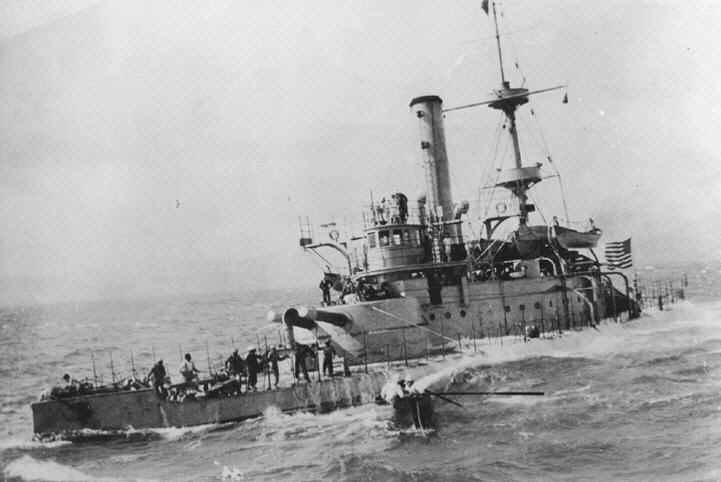
In 1890 the Navy's Policy Board called for a variety of large caliber weapons, from 8" (20.3 cm) all the way up to 16" (40.6 cm). A lighter weight heavy weapon with a bore of 10" (25.4 cm) was also desired to arm monitors and what became the "Second Class Battleship" USS Maine. This weapon was the first heavy breech loader (BL) gun of the "New Navy" and is the direct ancestor to every large caliber breech loading naval weapon ever built in the USA.
Background note: The gunpowder (black powder) propellants used for most of the 19th century burned very quickly, giving their projectiles a short, sharp kick. This meant that a long barrel would actually decrease the muzzle velocity, which was due to friction after the propellant had already finished combustion. This is why the heavy guns of this earlier era had such short barrels, some only 20 calibers long. Scientific advancements of the late 1800s saw the development of brown, or cocoa, powder. This burned more slowly, which allowed a longer barrel length and thus increased the muzzle velocity. However, this propellant also wasted much of its energy producing thick smoke, which could unsight the gunners. Late in the century, further advancements resulted in nitrocellulose propellants which burned even slower with significantly less smoke (hence the name "smokeless powder") which allowed longer, higher-velocity guns to be developed. These short-barrel 10" (25.4 cm) guns, having been designed for black and brown powders, were thus obsoleted almost immediately after their service introduction, but did serve for many years using the new nitrocellulose propellants.
The Mark 1 was built in two lengths, 31 calibers (Mod 0 and Mod 1) and 35 calibers (Mod 2). These were installed in pairs on the monitor Mianonomoh. The Mark 1 Mod 0 and Mod 1 consisted of A tube, jacket, 15 hoops and one locking ring. The Mark 1 Mod 2 consisted of A tube, jacket, 14 hoops and one locking ring. The Mark 2 was of simpler construction, having only 11 hoops, and was used on other monitors and USS Maine. My research suggests that these guns used the Farcot side-swing breech mechanism as originally manufactured and later were given the Fletcher breech mechanism. With the Fletcher mechanism, the breech could be opened and closed again by one man in 26 seconds.
| Designation | 10"/31 (25.4 cm) Mark 1 Mod 1
10"/34 (25.4 cm) Mark 1 Mod 2 10"/30 (25.4 cm) Mark 2 |
|---|---|
| Ship Class Used On | Mark 1 Mod 1 and Mod 2
Mianonomoh (M-5) Mark 2
|
| Date Of Design | About 1891 |
| Date In Service | 1895 |
| Gun Weight | Mark 1 Mod 1
57,500 lbs. (26,082 kg) (without breech) Mark 2
|
| Gun Length oa | Mark 1 Mod 0 and Mod 1
329.1 in (8.359 m) Mark 1 Mod 2
Mark 2
|
| Bore Length | Mark 1 Mod 1
312.8 in (7.946 m) Mark 1 Mod 2
Mark 2
|
| Rifling Length | N/A |
| Grooves | N/A |
| Lands | N/A |
| Twist | Mark 1: Increasing RH 0 to 1 in 35
Mark 2: Increasing RH 0 to 1 in 26.8 |
| Chamber Volume | N/A |
| Rate Of Fire 1 | As commissioned: About 0.66 rounds per minute
After about 1905: 2 - 3 rounds per minute |
- ^The original Rate of Fire was greatly improved by more careful loading practices and better training.
| Type | Bag |
|---|---|
| Projectile Types and Weights | AP - 510 lbs. (231.3 kg)
Common - 510 lbs. (231.3 kg) |
| Bursting Charge | AP - 9.8 lbs. (4.4 kg) Black Powder
Common - 20 lbs. (9.1 kg) Black Powder |
| Projectile Length | N/A |
| Propellant Charge | 93 lbs. (42.2 kg) NC |
| Muzzle Velocity | 2,000 fps (610 mps) |
| Working Pressure | 14.0 tons/in2 (2,200 kg/cm2) |
| Approximate Barrel Life | N/A |
| Ammunition stowage per gun | 90 rounds |
| Range | Side Armor | Deck Armor |
|---|---|---|
| 6,000 yards (5,490 m) | 6.9" (175 mm) | --- |
| 9,000 yards (8,230 m) | 5.8" (147 mm) | --- |
| 12,000 yards (10,920 m) | 4.2" (107 mm) | --- |
This data is from "Elements of US Naval Guns" of 1918. It is corrected for angle of fall and may also refer to harder armor than used for the 1905 data.
| Designation | Two-gun Turrets
Mianonomoh (2): Mark 1 Amphitrite (2) and Monterey (1) 1a: Mark 2 Maine (2): Mark 3 2a Terror (2): Mark 5 3a |
|---|---|
| Weight | N/A |
| Elevation | Mark 1 and Mark 2: -3 / +13.5 degrees
Mark 3 and Mark 5: -3 / +15 degrees |
| Rate of Elevation | N/A |
| Train | about -150 / +150 degrees |
| Rate of Train | N/A |
| Gun Recoil | N/A |
| Loading Angle | Mark 1: +13.5 degrees
Marks 2 and 3: +10 degrees Mark 5: Any angle |
- ^USS Monterey was unusual in that she had a twin 12"/35 (30.5 cm) turret forward and a twin 10"/30 (25.4 cm) turret aft.
- ^The Mark 3 turret differed from the Mark 2 mainly in the details of the means of checking the recoil.
- ^USS Terror was unique in that she had pneumatically powered turrets, including the run-out. All others had hydraulic operation.
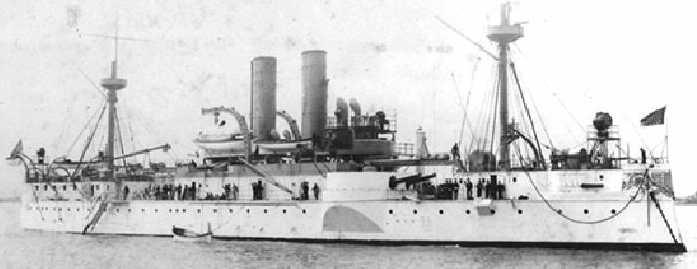
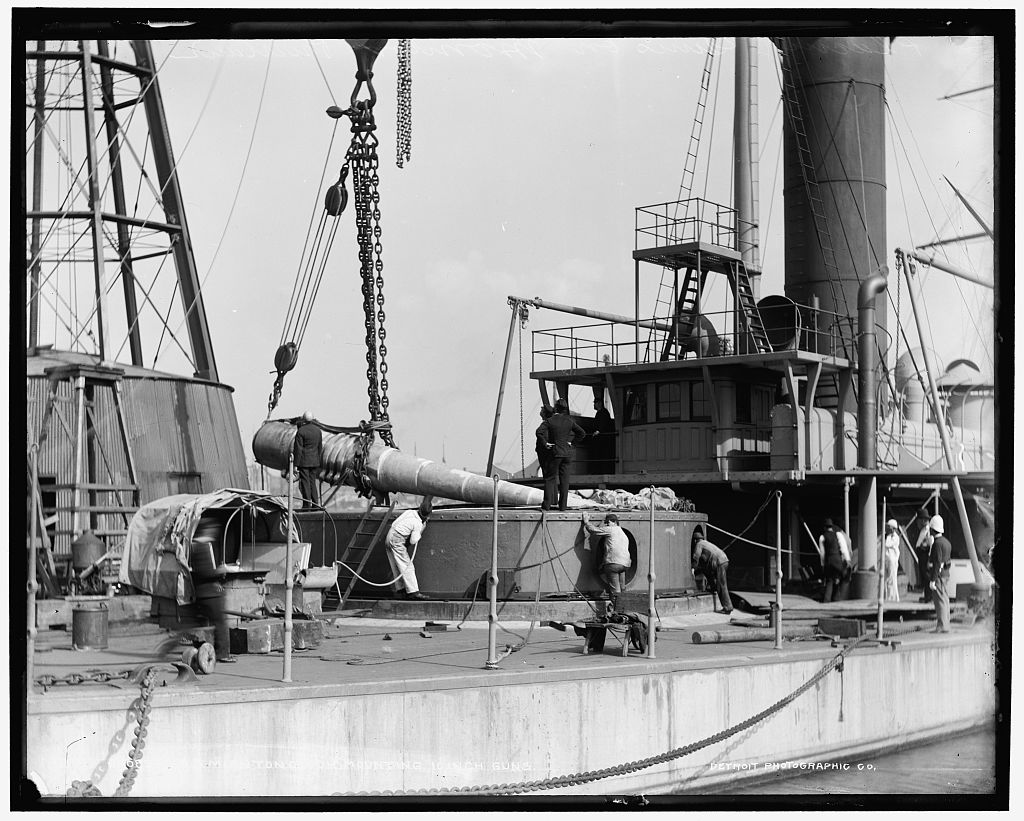
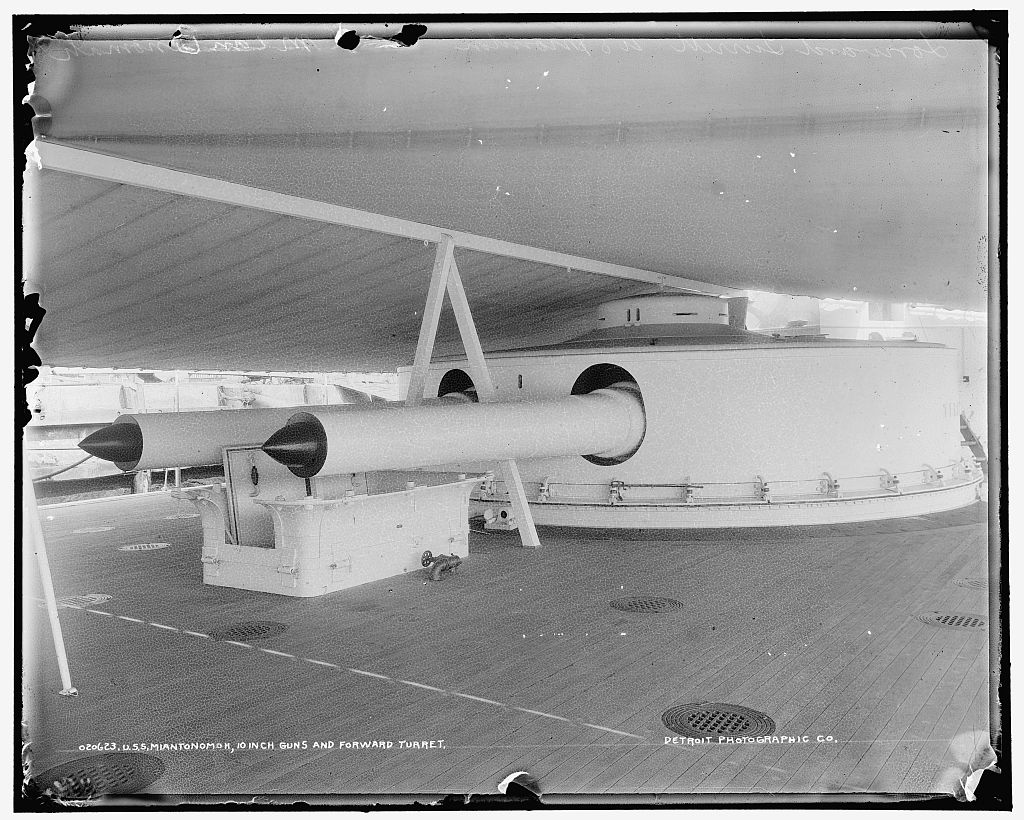
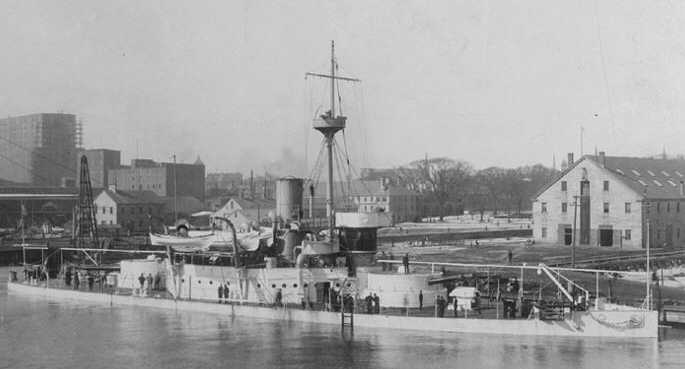
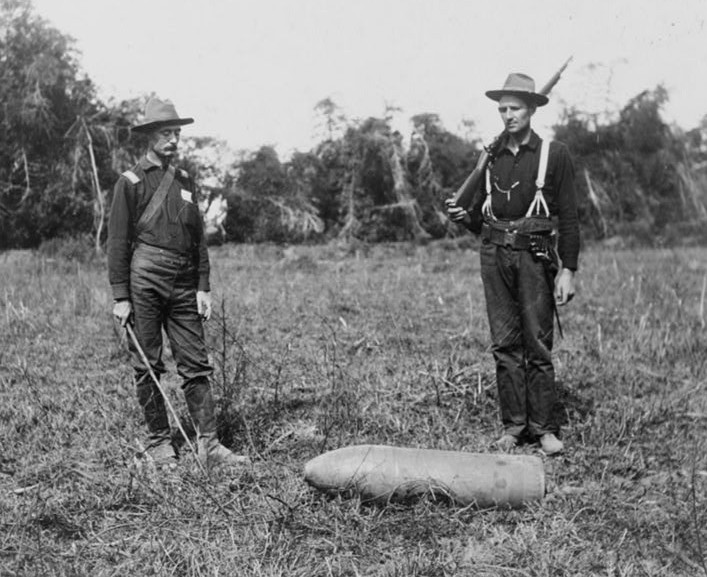
"US Battleships: An Illustrated Design History" and "US Naval Weapons" both by Norman Friedman
"A Treatise on Rifling of Guns" by Carl F. Jeansén
---
"Naval Ordnance"
article in "Proceedings July 1894" Vol. 20/3/71 by P.R. Alger, Professor of Mathematics, U.S. Navy
---
"Ordnance and Gunnery, A Text-book Prepared for the Use of the Midshipmen of the United States Naval Academy" by Officers of the U.S. Navy (1910)
"United States Naval Guns: Their Marks and Modifications" Ordnance Pamphlet No. 127, December 1916, Second Revision June 1924
---
Gene Slover's Navy Pages
---
Special help from Leo Fischer
19 September 2008 - Benchmark
12 January 2009 - Added picture of Monadnock shell
25 July 2016 - Converted to HTML 5 format
23 October 2020 - Added ammunition data, reorganized notes
21 June 2023 - Added comments regarding Farcot and Fletcher breech mechanisms
